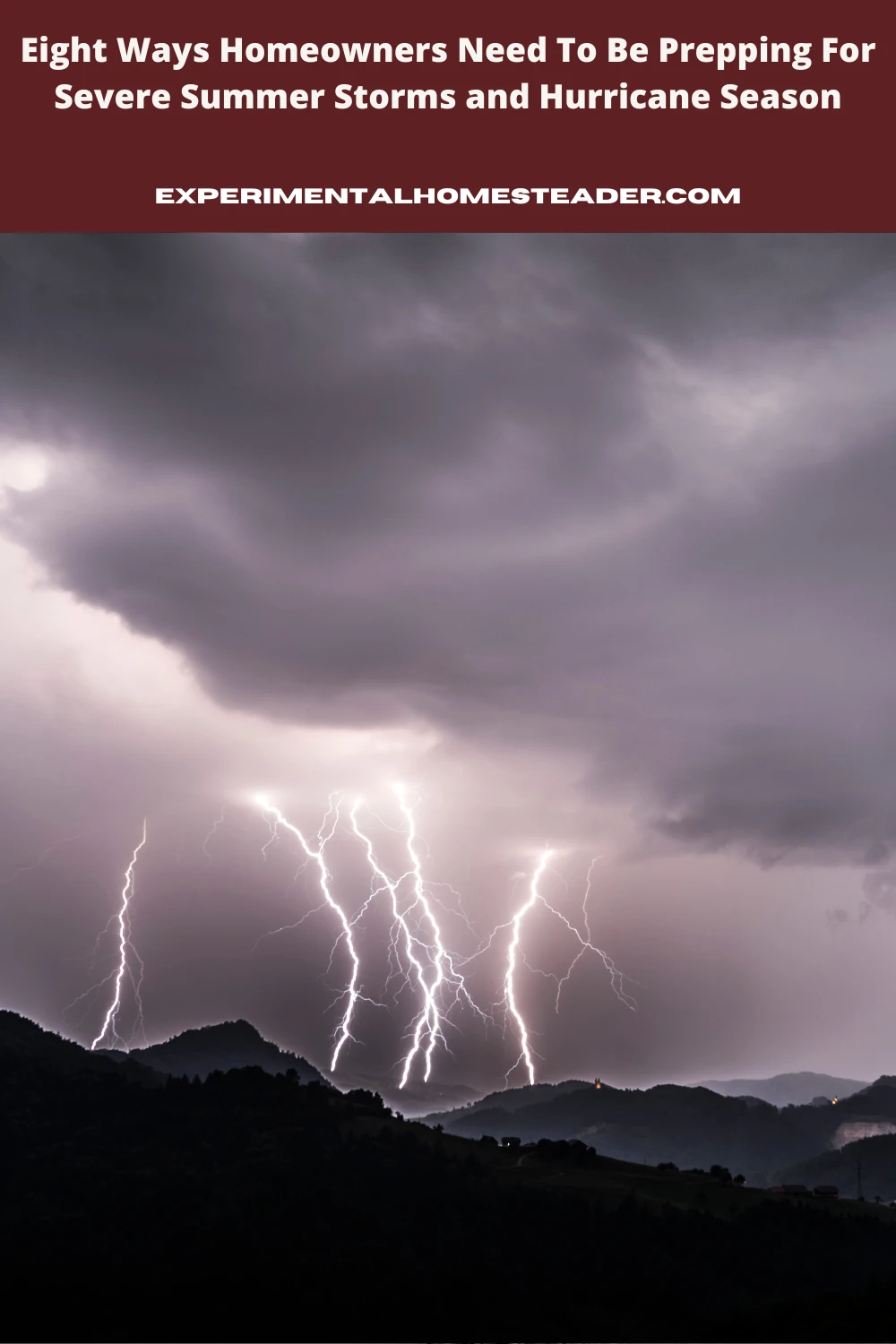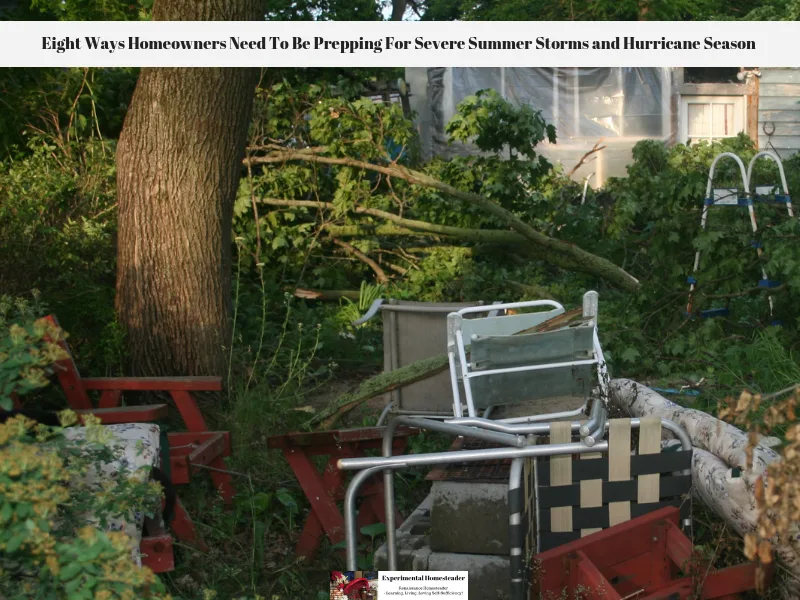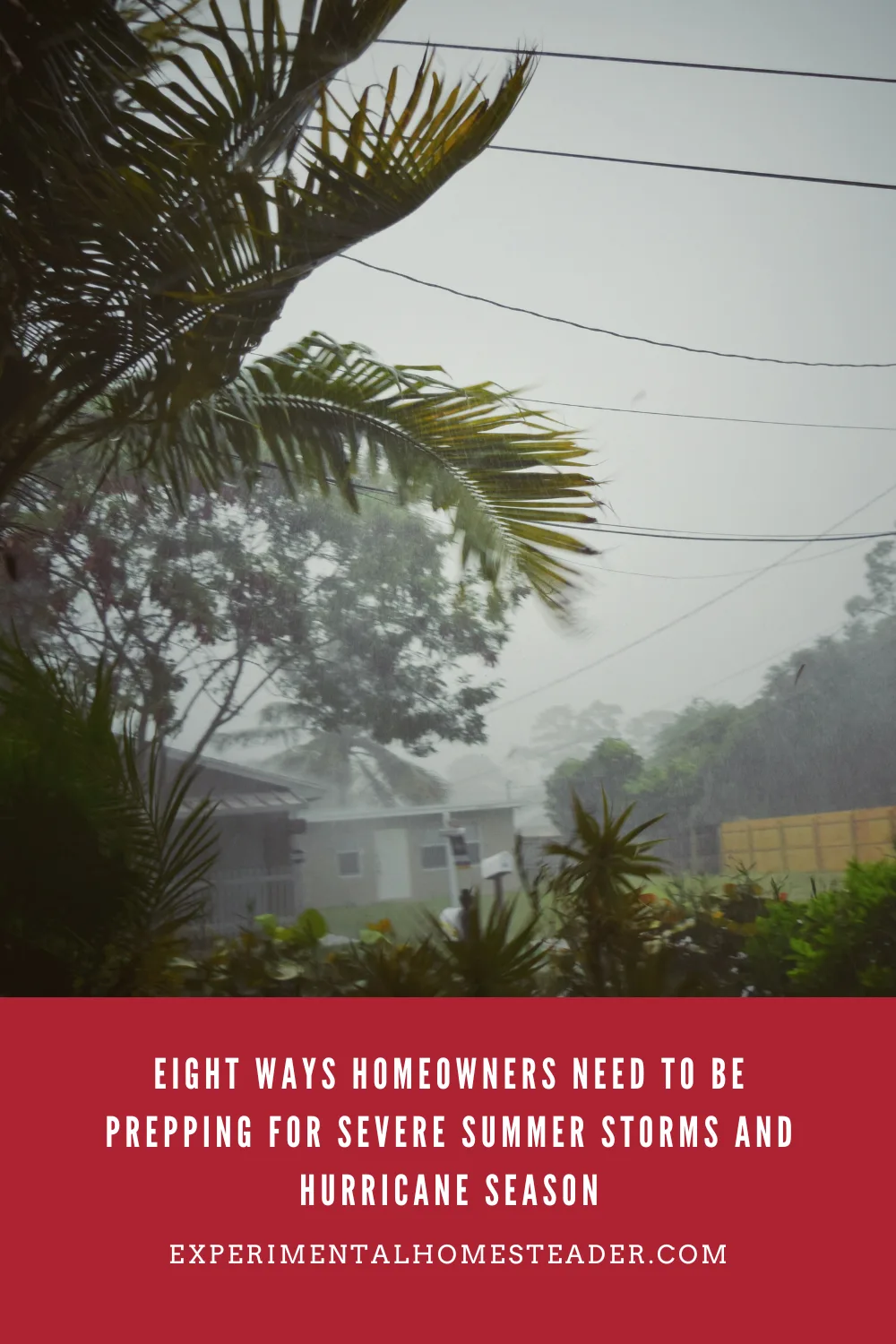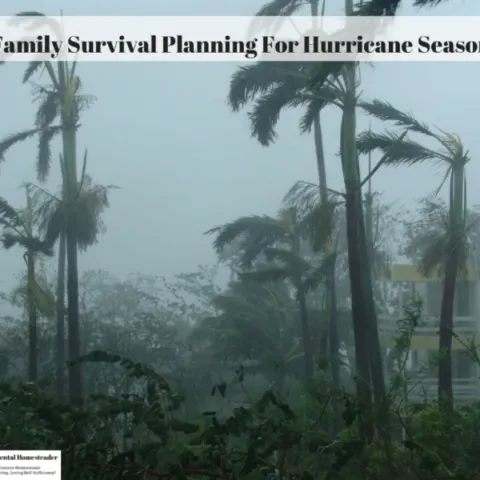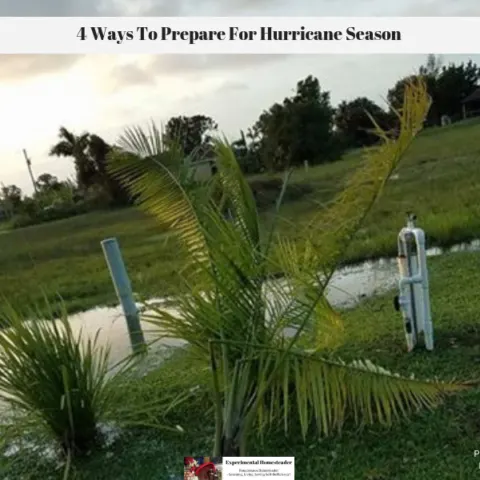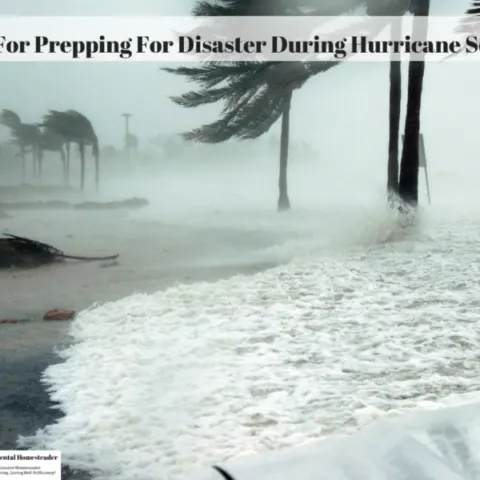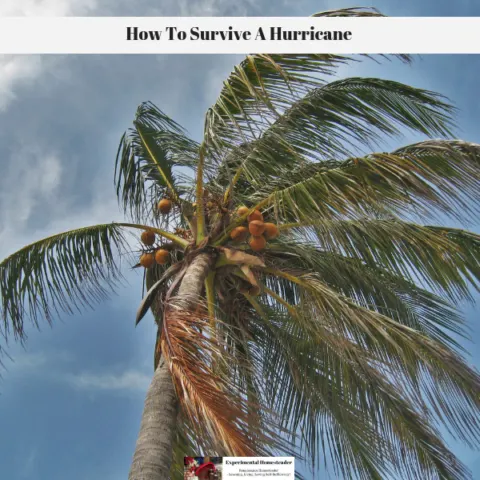Disclaimer: This is a sponsored post, but I was not compensated for it. I felt it was good information that my readers could use. There are also links below to products I recommend from companies I have a referral relationship with. I will be compensated if you make a purchase after clicking on my links. Ryan Larsen is a civil engineer at NDS, Inc., which manufactures a wide range of stormwater and drainage products—such as catch basins, pop-up emitters, channel drains and French drains—for both residential and commercial markets. Ryan is also known as “Dr. Drainage” as host of NDS’s YouTube video series about how to correctly use drainage and stormwater management products.
When it comes to prepping, there are many ways to begin prepping on a tight budget by simply doing some of the work yourself.
Severe summer storms and hurricanes are acts of nature that no one can control - and if your home is in the path of the storm, there is most likely going to be damage occur.
There are some things you can do ahead of time to prepare yourself, your family and your home for any natural disaster that might occur, even if you are prepping on a tight budget.
Designate A Space In Your Home As Your Storm Center
Create a space in your pantry, garage or basement specifically for storm preparedness.
Use it to store flashlights, batteries, candles, bottled water and non-perishable foods, among other things.
The Federal Emergency Management Agency has a website devoted to storm readiness and provides a list of specific items you ought to be including in your preparations; it also explains the frequency with which certain supplies should be swapped out if they haven’t been used.
Stock Up On Water
Flooding from summer storms can taint your water supply, so make sure you have enough safe, potable (i.e. drinkable) water.
It’s a good idea to keep 3-4 cases of bottled water in your garage or basement, just in case.
Should you end up without access to clean water, the general rule of thumb is to plan on using one gallon of water per person per day plus extra for each pet.
Close Your Windows
This may seem obvious, but windows are one of the biggest things homeowners overlook when a storm is approaching.
Make sure your windows – and especially, your basement windows – are closed.
Basements or crawlspaces often have windows or small vents on exterior walls and, if not properly secured, they can funnel pooled water directly into your home.
Prune Your Trees
Flying branches and falling trees are some of the most common – and expensive – causes of damage during hurricane season, and regular tree maintenance can mean a world of difference when it comes to tree strength during a storm.
Preventative pruning to thin the top of the tree reduces wind resistance and in turn, reduces the force that can damage branches or even the trunk of the tree.
Pruning also removes dead branches that can break easily and cause damage to the tree and the surrounding landscape.
Inspect Your Yard For Obstructions
Remove any ground-level branches, leaves, trash or other debris from your yard that can become obstructions to storm water drainage systems and cause flooding.
Secure patio and lawn furniture, toys and garbage cans that can become projectiles during high winds.
As a general practice, it’s best to never dump anything down storm drains — sweep grass clippings, fertilizer and soil onto your lawn so they don’t get washed into storm drains.
Clean Out Gutters And Downspouts
Inspect your gutters and remove any debris that has collected; this ensures that water can properly flow through the gutters, and away from your roof and home.
Doing this reduces the chances of buildup and clogging once a storm hits.
After you get twigs and leaves and any other obstructions out of the gutters, run water through your downspouts to make sure they work properly.
Ensure Water Flows Away From Your House
If water isn’t carried far enough away from your house, it can seep into your home’s foundation and flood flower beds, planter boxes and plants in containers, making a mess and creating standing water as a breeding ground for mosquitoes.
Make sure the downspouts from your gutters carry water at least 10 feet away from your home.
If they don’t, install downspout extension pipes, which can be purchased at your local hardware or home improvement store.
It’s also advisable to install a catch basin.
This collects water from the landscape and downspouts; connects to a drainage pipe and discharges water away from the house.
Clear Debris From Your Street’s Drains
It’s a good idea to check for debris that may be blocking stormwater drains in the street adjacent to your house.
By doing this, you’ll better protect your property from overflowing streets and flooded lawns that can cause seepage back into your basement and other low-lying areas.
For more information about how to select and install solutions for fixing the 8 most common water problems encountered by homeowners, visit NDS’s Home Drainage Center.
Hurricane Emergency Readiness Tips
Family Survival Planning For Hurricane Season
Family survival planning for hurricane season is essential. Check out these natural disaster survival tips and prepare your emergency readiness plan now.
4 Ways To Prepare For Hurricane Season
Save time and stay safe when you prepare for hurricane season ahead of time by stocking up on supplies and getting your home hurricane ready.
Tips For Prepping For Disaster During Hurricane Season
It's a good idea to begin prepping for disaster no matter where you live. Check out these hurricane season prepping and survival tips.
Eight Ways Homeowners Need To Be Prepping For Severe Summer Storms and Hurricane Season
Are you prepping on a tight budget? Here are eight ways homeowners need to be prepping for severe summer storms or hurricanes!
How To Survive A Hurricane
To survive a hurricane it is important to understand the different categories and the risks each one poses. Prepare ahead of time and evacuate early!



